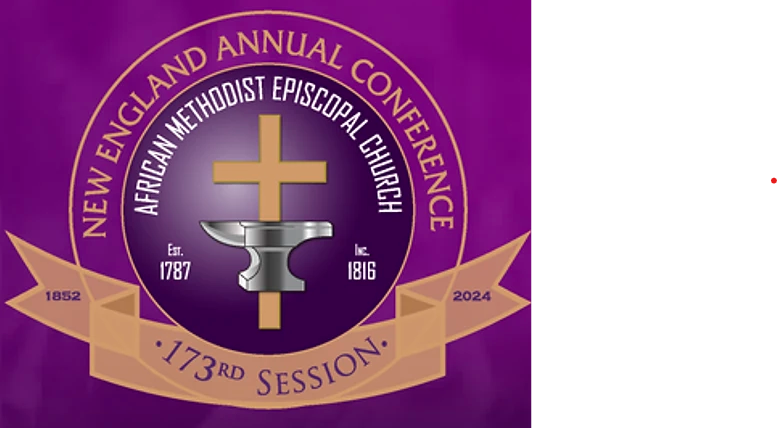About the A.M.E. Church
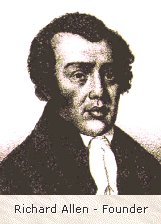 In November 1787,
In November 1787,  Richard Allen and a number of other black Methodists arrived at St. George's Methodist Episcopal Church in Philadelphia, Pennsylvania, to attend Sunday services. They were directed toward a newly built seating gallery, and mistakenly sat in its "white" section. During a prayer, white ushers pulled the black worshippers to their feet and demanded that they sit in the "proper" section. Humiliated, Allen, a former slave from Delaware who had joined the evangelical Wesleyan movement because of its work against slavery and who eventually became a licensed Methodist preacher and several others left the church at the prayer's end. "They were no more plagued with us in the church," he later said.
Richard Allen and a number of other black Methodists arrived at St. George's Methodist Episcopal Church in Philadelphia, Pennsylvania, to attend Sunday services. They were directed toward a newly built seating gallery, and mistakenly sat in its "white" section. During a prayer, white ushers pulled the black worshippers to their feet and demanded that they sit in the "proper" section. Humiliated, Allen, a former slave from Delaware who had joined the evangelical Wesleyan movement because of its work against slavery and who eventually became a licensed Methodist preacher and several others left the church at the prayer's end. "They were no more plagued with us in the church," he later said.
The gap between black and white Methodists was also created, according to theologian Will B. Gravely, by "incidents of white pastors refusing to take black infants into their arms to christen them ... of blacks having to wait until all whites were served the Lord's Supper before being admitted to the table ... [and] of conflicts over access to burial grounds." 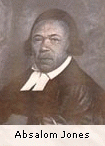 In response to such discrimination, African American Methodists in Baltimore, Maryland, and Philadelphia began holding separate prayer meetings as early as 1786, two years after the founding of American Methodism. With the support of other black Methodists, Allen tried to buy a separate building for such meetings, but abandoned his plan in the face of white hostility. Recognizing the importance of black self-reliance, Allen, Absalom Jones, and others had formed the Free African Society benevolent organization whose commitment to abolition and the aiding of blacks in times of need became a model for other societies nationwide. But they were still dependent on dominant Methodist institutions.
In response to such discrimination, African American Methodists in Baltimore, Maryland, and Philadelphia began holding separate prayer meetings as early as 1786, two years after the founding of American Methodism. With the support of other black Methodists, Allen tried to buy a separate building for such meetings, but abandoned his plan in the face of white hostility. Recognizing the importance of black self-reliance, Allen, Absalom Jones, and others had formed the Free African Society benevolent organization whose commitment to abolition and the aiding of blacks in times of need became a model for other societies nationwide. But they were still dependent on dominant Methodist institutions.
By 1794 Philadelphia's black Methodists had raised enough money to build their own church, which a majority of the congregation voted to align with the Episcopalians rather than the Methodists. They named it the Saint Thomas African Episcopal Church. Allen, however, believing that "no religious sect or denomination would suit the capacity of the colored people as well as the Methodists, for the plain and simple gospel suits best for any people," purchased that year a blacksmith shop with his own money and converted it into a storefront church. Methodist Bishop Frances Asbury named it the Bethel African Methodist Episcopal Church. 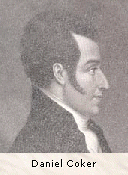 By 1816 black Methodists, still facing persistent discrimination, had come to believe that separate churches were not enough. In April, 16 representatives from five congregations met at Bethel, Philadelphia, to discuss their legal independence from the main body of the Methodist church. Voting to organize under the name the African Methodist Episcopal Church, or AME Church, they then successfully sued for independence before the Supreme Court of Pennsylvania. Richard Allen became the first AME bishop after the elected bishop Daniel Coker declined the position.
By 1816 black Methodists, still facing persistent discrimination, had come to believe that separate churches were not enough. In April, 16 representatives from five congregations met at Bethel, Philadelphia, to discuss their legal independence from the main body of the Methodist church. Voting to organize under the name the African Methodist Episcopal Church, or AME Church, they then successfully sued for independence before the Supreme Court of Pennsylvania. Richard Allen became the first AME bishop after the elected bishop Daniel Coker declined the position.
The new AME Church was not greatly different from the original Methodist Church. Baptism and communion practices were much the same and hymn singing during worship remained prominent. But cultural practices distinct to African Americans assumed greater importance. AME services were loud and spirited. Spirituals and spontaneous praying and shouting distinguished them from the more tepid white Methodist services.
The AME Church was also distinguished by its commitment to political agitation and social activism in the United States and throughout the African diaspora. It followed the precedent set by the uplift projects of the Free African Society, and was influenced by the emergent philosophies of Black Nationalism and Pan-Africanism. In the 19th century, its political commitment and use of vernacular cultural traditions fueled the church's expansion in both the United States and the rest of the world. In the South, its ranks were bolstered by evangelization among black soldiers during the Civil War (1861-1865). Later, AME clergy ran for and won numerous political offices in the South during the Reconstruction era.
The church sent Scipio Bean as a missionary to Haiti in 1827, but it wasn't until later in the century that the evangelical efforts of AME clergy internationalized the church. British Methodist Episcopal (BME) congregations in Canada, Bermuda, and South America, originally part of the AME, rejoined the church in 1884. Bishop Henry McNeal Turner, a supporter of African American repatriation to Africa, established annual conferences in West Africa, oversaw the development of congregations in Cuba and Mexico, and accepted the membership of the Ethiopian Church of South Africa. Internally, there has been criticism of these internationalization efforts. Some members have argued that the AME should concentrate on improving the conditions of black people within the United States. Nevertheless, the church has congregations today in more than 20 African countries, as well as Jamaica, Guyana, Haiti, the Dominican Republic, Suriname, the Virgin Islands, the Windward Islands, Canada, and England. 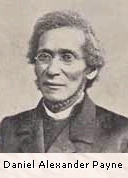 During the 20th century, the AME Church was active in the Civil Rights Movement and in attending to the needs of African Americans displaced by the northern exodus of the Great Migration. Through a pragmatic, activist gospel, the church addressed housing, welfare, and unionization issues for new emigrants to northern cities. At mid-century, AME pastors filed suits against public school segregation, which culminated in the Brown v. Board of Education of Topeka, Kansas (1954) decision, a decision by the Supreme Court of the United States that began the process of school desegregation. This interest in education dated back to 1863, when Bishop Daniel Alexander Payne encouraged the founding of the Wilberforce University, the first of numerous colleges founded by the AME Church, and the first black college to be founded by blacks.
During the 20th century, the AME Church was active in the Civil Rights Movement and in attending to the needs of African Americans displaced by the northern exodus of the Great Migration. Through a pragmatic, activist gospel, the church addressed housing, welfare, and unionization issues for new emigrants to northern cities. At mid-century, AME pastors filed suits against public school segregation, which culminated in the Brown v. Board of Education of Topeka, Kansas (1954) decision, a decision by the Supreme Court of the United States that began the process of school desegregation. This interest in education dated back to 1863, when Bishop Daniel Alexander Payne encouraged the founding of the Wilberforce University, the first of numerous colleges founded by the AME Church, and the first black college to be founded by blacks.
In the 1960s, AME-trained theologians James H. Cone and Cecil W. Cone pioneered the development of black theology. AME member Jacqueline Grant made significant contributions to feminist theology. Grant was one of many women to be involved in the church throughout its history. Although women were not ordained until 1960, unordained women had worked as church activists and evangelists since Richard Allen approved Jarena Lee to work as an adviser in 1819.
